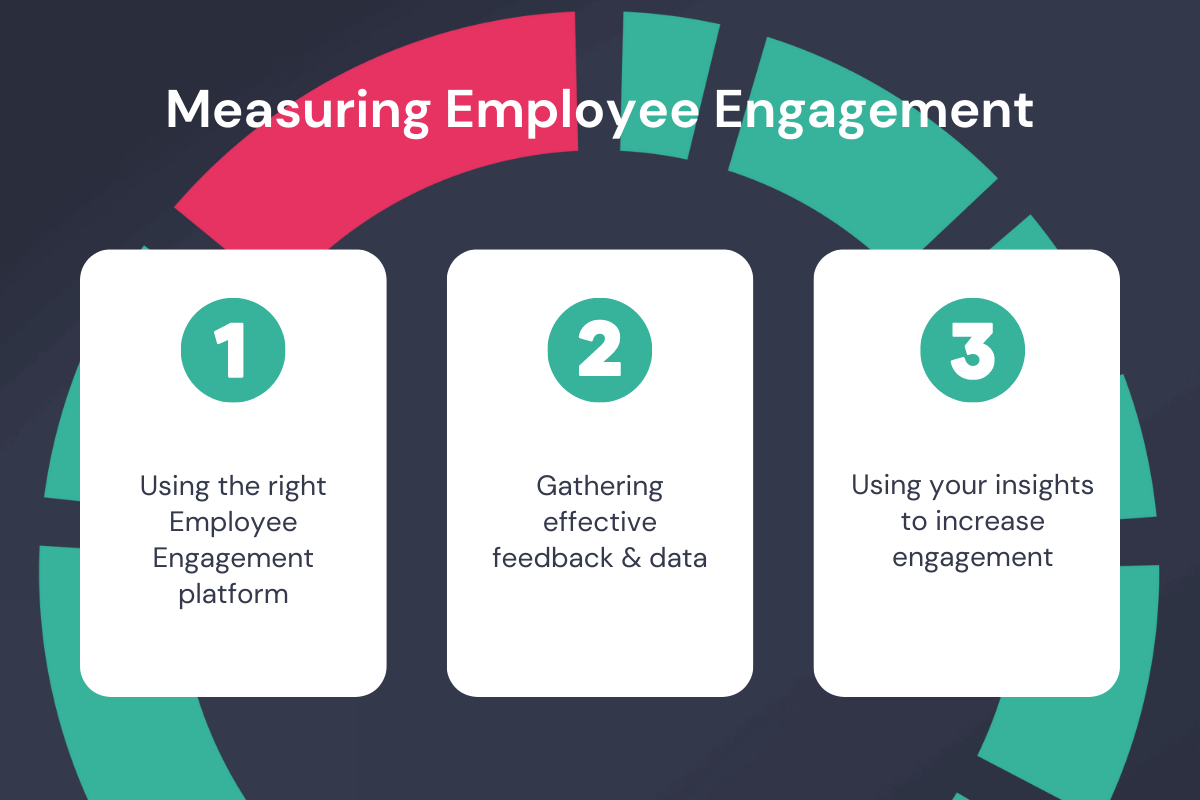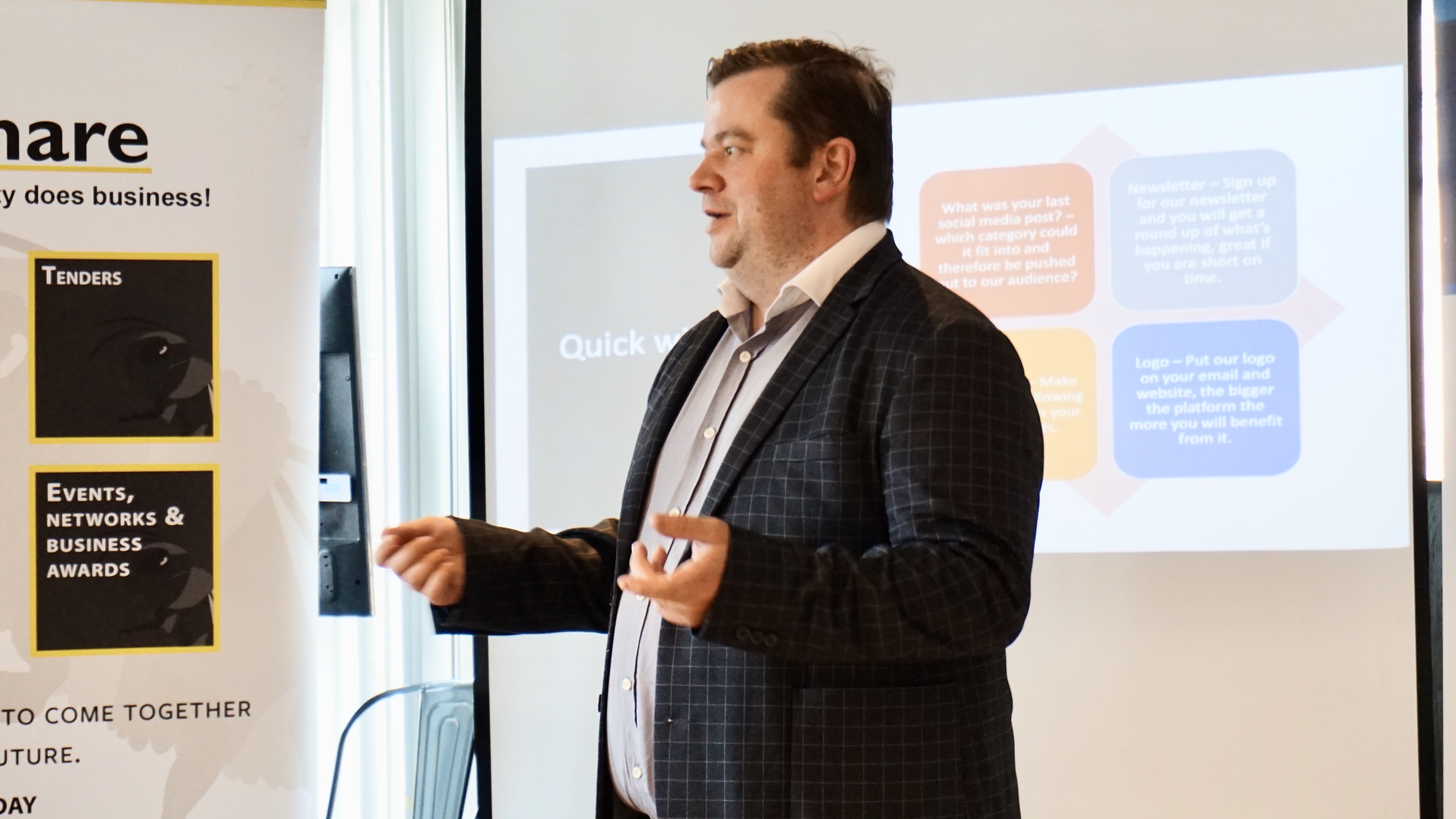
? Organisations with high engagement outperform organisations with low engagement by 202%.
Employee Engagement needs to be one of your top priorities to ensure your business can succeed.
Some believe engagement is solely about having happy employees, but engagement goes beyond this. Enhanced employee engagement reveals itself in employees reaching their full potential and delivering exceptional performance at work.
The goal is to create an environment, where employees bring their best selves to work and do their best work when they get there.
Do you really need to measure engagement?
You don’t NEED to, but we think you should! Putting a numerical value on engagement allows you to track trends and changes in engagement over time. You can then understand in more detail the impact that the changes you make in the organisation have on engagement.
Without a measurement of some kind, you will just need to guess whether that benefit you introduced had the positive impact you hoped it would.
If you’re tracking your retention rates or number of leavers, but not tracking engagement you are only monitoring half of the picture. Leavers from your organisation are a result of poor engagement, so measuring and monitoring engagement can help you to impact on your retention rates in a proactive way.
Using effective engagement measures helps us to predict and ultimately prevent employee turnover.
You can measure your engagement through employee surveys. Done well, surveys also have the benefit of capturing written feedback as well as data. They are an excellent way to create employee voice.
There are 3 things you need to consider when measuring engagement:
Using the right Employee Engagement platform
Gathering effective feedback & data
Using your insights to increase engagement

Using the right Employee Engagement platform
One of the first topics that comes up when an organisation decides to do an employee engagement survey is utilising a third party company. So what are the advantages of using a specialist to carry out your surveys?
The best questions are written by a third-party

An expert, outside perspective will be most helpful to leadership and HR teams. Questions can’t be written in a way that would positively influence the quality of responses and make the most of the insight you capture.
Trust in anonymity
? 74% of employees said they’d be willing to give more feedback if they were truly anonymous.
For anonymity and trust, using a third-party employee survey platform is crucial. It makes the survey-taking experience for employees as psychologically safe as possible. It might be challenging for teams to trust their responses are anonymous when surveys are conducted internally.
Speedy data gathering
A specialised platform can greatly speed up data processing and the time it takes to move from survey launch to action. When it comes to analysing and disseminating survey results, choosing a platform to do the data-crunching for you can be a smart investment.
? For more on the benefits of an Employee Engagement platform and to find the one that’s right for you, check out our blog.
Gathering effective feedback & data
Your survey design affects the results you get. Design it wisely!
Survey too long - Employees get bored, leave short answers and are more likely to not complete.
All one type of question - Employees get used to the repetitiveness of tick boxes and are less likely to think the question through.
Surveys happen once a year - Employees get the impression that the survey is purely so the company can say they’ve done it. After all, they haven’t seen any action from the last one so who’s to prove them wrong?
How to design a great survey

Your survey should be kept brief and contain only the questions that would elicit the most honest & reliable answers. A typical Ten Space survey should take no more than 10 minutes to complete, our ideal is 5 minutes.
To provide you with data points and written responses, we advise using a variety of scaled questions (0–10) with a few written feedback questions as well.
Aim to keep the number of questions on your employee survey around 12-20. Better data quality and response rates will result from doing this as people won’t lose interest.
Do it often. We recommend every 3 months (every 6 months at the minimum).
Switch up the topics to keep it interesting. It’s great to have some data points to track from one survey to the next, employees don’t want to take the same survey time and again. Keep it relevant and keep it interesting.
Designing a great survey will allow your team to finish the survey in a reasonable amount of time and give them the opportunity to provide comments that are more in-depth.
Creating great processes & habits around employee feedback & actions will pay off. This will come through in both survey completion rates and engagement levels.
Using your insights to increase engagement
The action you take from a survey is what matters most, not the survey itself. By not taking feedback seriously you risk losing valuable team members.
? Employees who don’t feel comfortable providing upward feedback are 16% less likely to stay in their organisation.
Tell a story

To get real value from the data that you’ve collected, you have to dig through it and discover where you need to make changes. You need to locate both the strengths and weaknesses within your business.
Look for patterns - Are there areas in which your organisation scored low across the board? Identifying failings that are affecting employee happiness is key to moving the needle.
Dissect the data - At an absolute minimum, you need to be able to segment the data by department. Not all teams work the same, and not all teams have the same concerns. Data creates stories at both an individual and a team level, so be sure to consider both.
Create a plan & discuss
Once you’ve identified patterns and drawn conclusions, it’s time to talk to individuals one-on-one. Communication is at the heart of all successful businesses. It’s important to talk about engagement and action planning regularly.
For decision makers - Is there time at board / leadership / management meetings to track progress and keep employee engagement high on the agenda? Not just the first meeting after a survey, but every one.
For individual leaders - Take the time to sit down with employees and discuss what’s keeping them engaged at work, and what (if anything) is holding them back. Give your employees structure, help them plan for the future, and act on what they tell you so you don’t lose their trust.
Explore data with segmentation
Knowing specific teams or demographics who are less engaged than others can help to highlight retention risk & drive specific actions.
You may find that there are key themes in smaller populations that emerge, which can have a huge impact on engagement overall when addressed.

There may be key areas, questions or themes that you might want to keep a close track on. You can build these into a dashboard or report that is regularly reviewed, so that progress can be monitored.
There is a word of caution when it comes to segmentation, it shouldn’t come at the cost of anonymity. At Ten Space, we have an “ethics” filter built into our platform, this allows us to protect anonymity to create a safe space for employees to share feedback, but also to drill down to identify additional insights.
A final thought….
Don’t forget to survey regularly. Employees feeling left out or uninformed could be a huge barrier to engagement.
By surveying regularly and creating a continual flow of employee ideas and feedback, you can build up a great picture to help you take a proactive approach to retention and prevent talent loss.
At Ten Space we create bespoke surveys which allow teams to share their honest feedback anonymously. This gives leaders the chance to listen to their team, understand the problems in the organisation and work on changing things for the better.
Our dashboard gives you instant insights. We provide tools and support to help you with reporting. These enable you to take the feedback to your leaders quickly and effectively.
Start your journey to high engagement with us by getting in touch. Or check out how we’ve helped others create incredible workplaces in our case studies.








